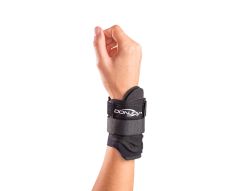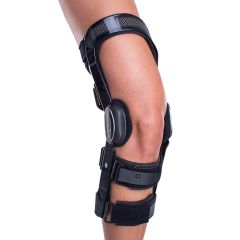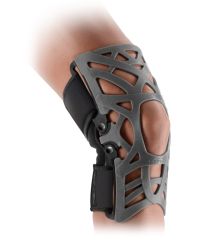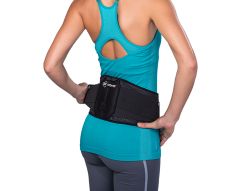The Most Common Snowboarding Injuries and How to Prevent Them
Even though skiing and snowboarding have a great deal of similarities; there are a few differences between the two sports, especially when it comes to injuries.
When skiing the skier is facing forward the whole time and shifts from side to side. Using the body differently than a snowboarder who twists from forward to back planes instead of side to side. The body’s position faces sideways with the torso and shoulders twisted forward. Just from the basic stance, the body uses different muscles to snowboard down the mountain. Add in speed, jumps and other tricks, which uses a great deal of power, strength and endurance from the core and legs.
Also note, when snowboarders fall, they tend to fall on their hands, knees, shoulders or heads.
What Causes Common Snowboarding Injuries?
- Snowboarding without rest/Fatigue
- Snowboarding at a higher skill level
- Improper equipment
- Dehydration
Knee/ACL Injuries
Since the design of snowboard boots and bindings have evolved, lower extremity injuries, such as the knee, have slowly become less common to snowboarders than skiers.
But, if an ACL injury arises, a supportive knee brace is a must-have item. To avoid this, snowboarders should do knee exercises prior to hitting the slopes to prepare the body for quick reactions and off balance movements. Like any sport, it’s important to do a proper warm-up and cool down when snowboarding.
To help shun knee injuries, good knee pads can be worn. Also, well-fitting equipment for size and weight can significantly decrease the possibility of injuries from snowboarding.
Ankle Sprains
There are a number of variables that can cause an ankle sprain, from wrong boots and bindings to overuse of the ligament and fall. An ankle injury can occur from a bad landing after a jump when excessive pressure and inversion is applied to the cluster of small bones in the foot and the ankle joint. To prevent ankle injuries, make sure the ankle does not move in the boot, which should fit snugly. Soft boots increase maneuvering capacity as well as risks of injury. Hard boots provide enhanced ankle support and are usually worn by racers. Hybrid boots are becoming very popular for the advantage of reducing the risks of injury while offering certain flexibility.
When an ankle injury happens, it’s important to reduce the swelling and compress the injury. Once inflammation has subsided, using an ankle support and doing ankle exercises can help speed up recovery.
To help prevent ankle injuries on the slopes, you can do ankle-strengthening movements to get the body strong enough for that type of movement on the mountain.
Shoulder Dislocations/Fractures/Separations
Mainly due to landing the wrong way, shoulder dislocations, fractures or separations occur. Learning to fall properly helps in avoiding shoulder injuries such as dislocation or fracture.
Try doing sport-specific movement that mimics falling so you can prepare the body and react quickly if you need to fall. Wearing shoulder protection can help prevent injury.
Spinal Injuries
Spinal injuries have grown over the past few years in snowboarding, mainly due to the increasing number of those who try jumps. Jumping is the number one reason snowboarders suffer from spinal injury, followed by a fall and then overuse.
Experts suggest those who jump need to learn proper technique and practice jumps off the mountain before attempting the tricks on the slopes.
Wrist, Hand or Thumb Injuries
One of the most common snowboarding injuries is a wrist fracture. Snowboarders’ wrists are broken when they fall on their outstretched hands. The pressure on the wrist bones is too great and these consequently break. Wrist sprains can also occur, where the ligaments are torn. Wearing wrist guards can help prevent wrist fractures and sprains. Keeping the hands in a fist position can also help with sprains.
How to Avoid Pain from Snowboarding
Here are some tips to help prevent unnecessary injuries so you can enjoy this fun and exciting sport throughout the winter season:
- Attend learning courses if beginner.
- Warm up and down exercises are essential.
- Keep an eye on other snowboarders and the terrain for holes, tree wells or rocks; injuries occur more often in natural environment than in terrain parks.
- Wear appropriate clothing, including goggles, sunglasses and sunscreen.
- Have gear checked frequently by pro shops.
- Use protective gear and equipment such as wrist guards, tailbone pads and knee pads.
- Know your limitations.









